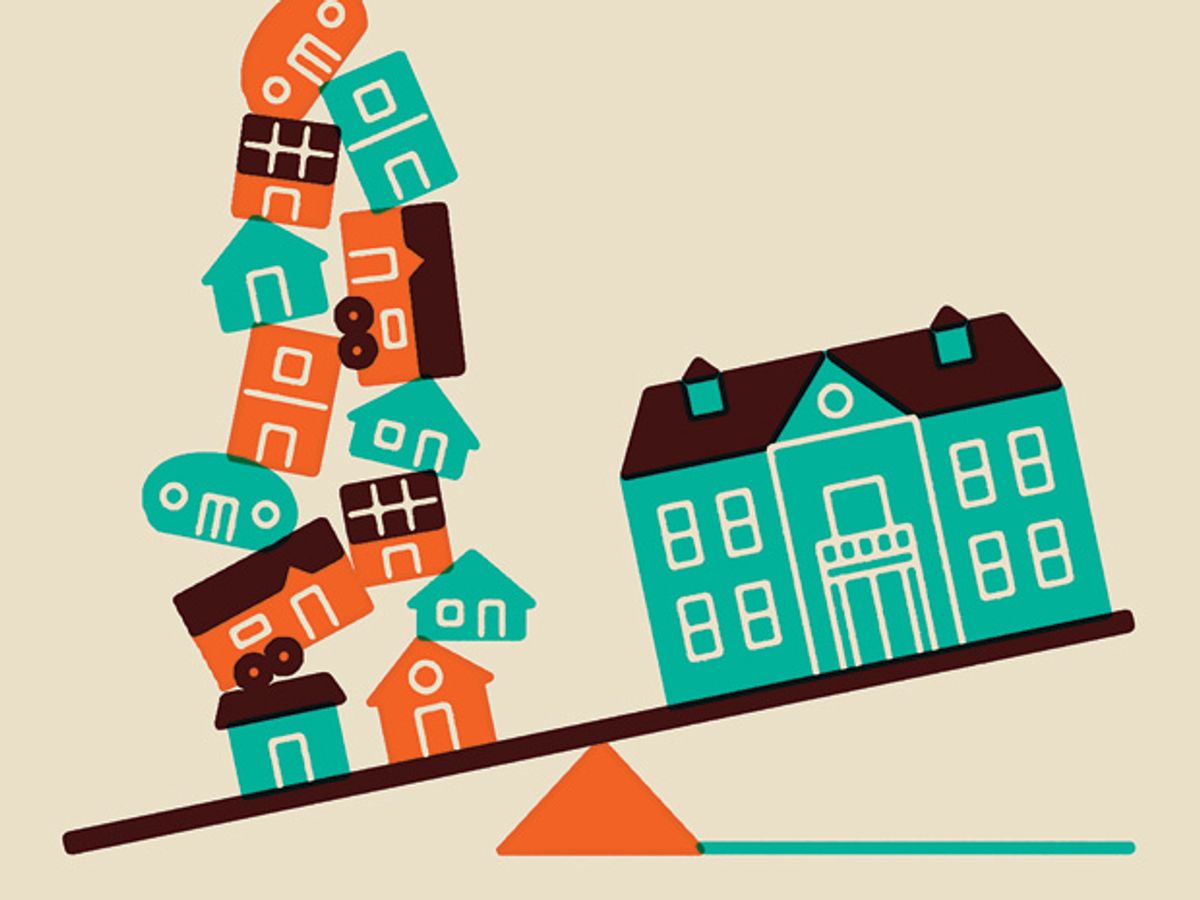Small is the new big.
—Bob Wheeler, CEO of Airstream
The comedian Steven Wright once quipped, “You can’t have everything. Where would you put it?” Yet for many years now, it seems as though consumers have been determined to buy everything, and are purchasing ever-bigger houses in which to store all their knickknacks and doodads. Back in 1900, the average U.S. single-family house was 65 square meters (700 square feet). That jumped to 93 m2 in 1949, 154 m2 in 1973, and a whopping 234 m2 in 2007 (according to the U.S. Census Bureau [pdf]). This trend led to a raft of new words that reflect a world increasingly flabbergasted by house sizes: Really big houses became monster homes or megahomes; oversize houses that didn’t fit the neighborhood were called McMansions or Godzilla homes; a massive house crammed into a small lot was a bigfoot home; garishly large dwellings were known as starter castles.
True, this mansionization trend did reverse itself for a few years as the housing market crashed—by 2010 the average size of a new house was down below 223 m2—but it soon continued its apparently unstoppable trend upward, cracking the 242 m2 mark by 2014.
But in the same way that many people are replacing conspicuous consumption with conspicuous austerity and lavish lifestyles with asset-lite lifestyles, housing downshifters are replacing trophy homes with tiny houses. And when I say tiny, I mean teensy tiny: These microhouses are often under 19 m2, with some nanohouses measuring less than 10 m2. This is known as the tiny-house movement, and its adherents—called, with pleasing ambiguity, tiny housers—are advocates of small-footprint living. The “footprint” here refers both to the dimensions of the house and to its impact on the environment, with the vast majority of small footprinters being dedicated environmentalists. Their eco homes are designed not only to be small but to be green, as well.
Some denizens of minihouses are solar guerrillas who use alternative energy sources such as solar power to illegally direct electricity back to the grid. Why would they do that? Usually it’s because they live in jurisdictions that don’t have net metering, which allows a utility to track the net difference between the electricity consumed via the grid and that generated by alternative means. The guerrilla solar movement advocates installing inverters that enable generated power to be fed back to the grid and force the electricity meter to run in reverse.
Some owners of pint-sized houses go a step further and live completely off the grid, where “the grid” now refers not only to the electricity network but to all utilities, including the water and sewage systems. This often involves stealth camping (also called boondocking), where tiny-house ninjas secretly park their wee homes in remote, isolated locations. Some are even equipping cargo trailers with home amenities, resulting in stealth tiny houses.
The small-space trend is also trickling down to home workers’ and telecommuters’ office space. Many home offices are moving outside to the garden, where toolsheds and potting sheds are being renovated and reborn as shedquarters, and their inhabitants are calling themselves shedworkers. There’s a thriving shedworking subculture online, where the shed-based lifestyle (the shedlife) is celebrated and refined.
The average size of a U.S. house has nearly quadrupled over the past 100 years. This has occurred despite Americans having smaller families and being only slightly taller on average than at the beginning of the 20th century (although, perhaps not coincidentally, they are much wider). The culprit is likely a version of the expenditure cascade, the increase in spending that results from consumption by the wealthy, which triggers emulative spending by the next lower class, which triggers spending by the class below that, and so on. Rich people have ever-bigger mansions, so the rest of us need ever-bigger houses, an unsustainable cascade. As the tiny housers and shedworkers are showing, small is indeed the new big.
This article originally appeared in print as “Tiny Houses, Big Lexicon.”
